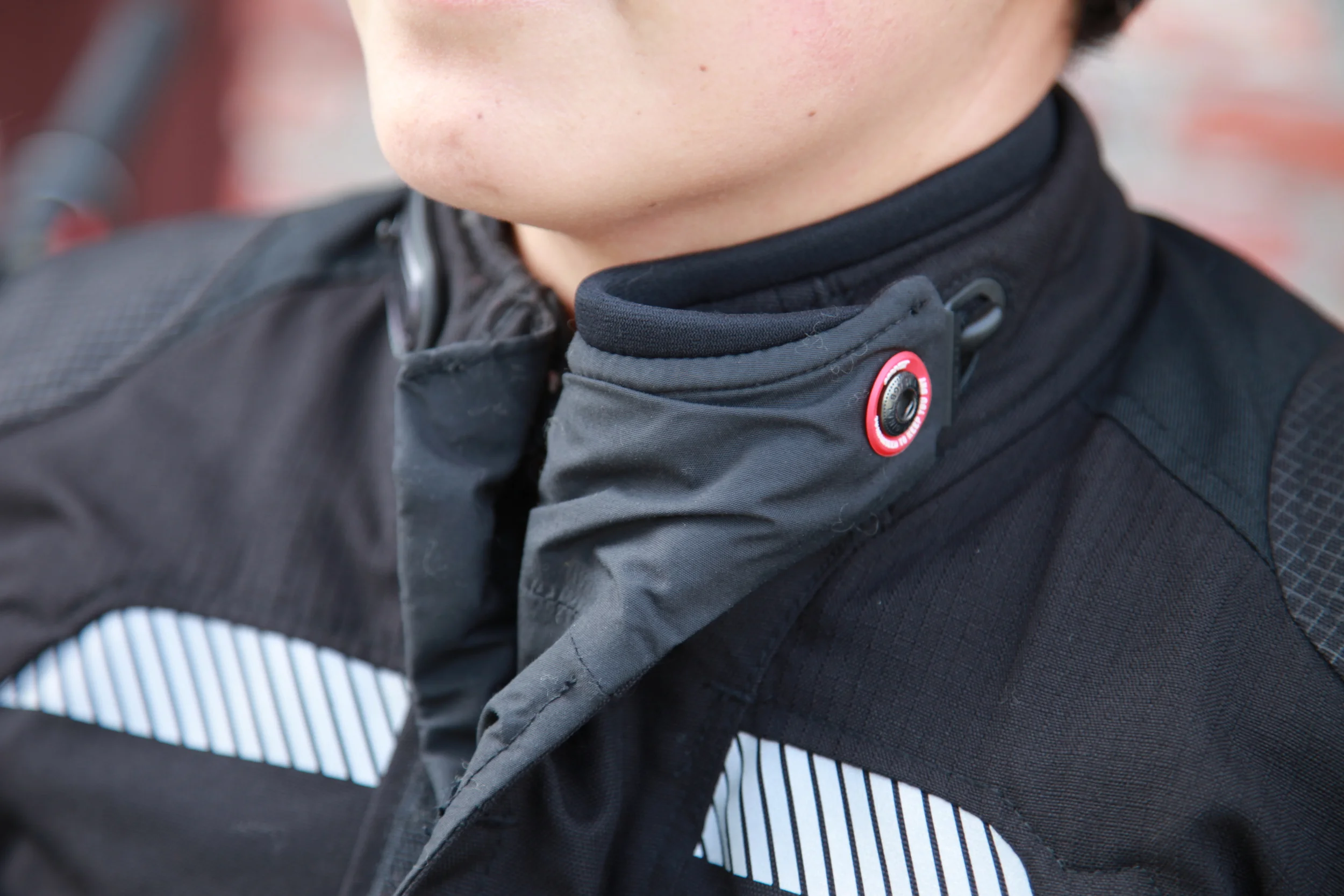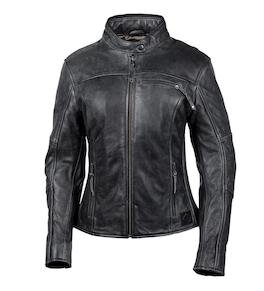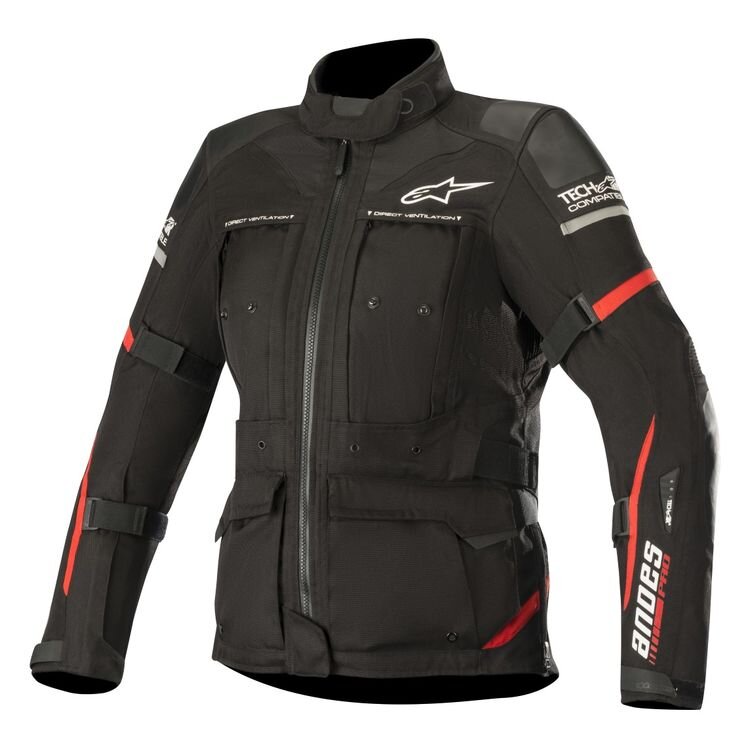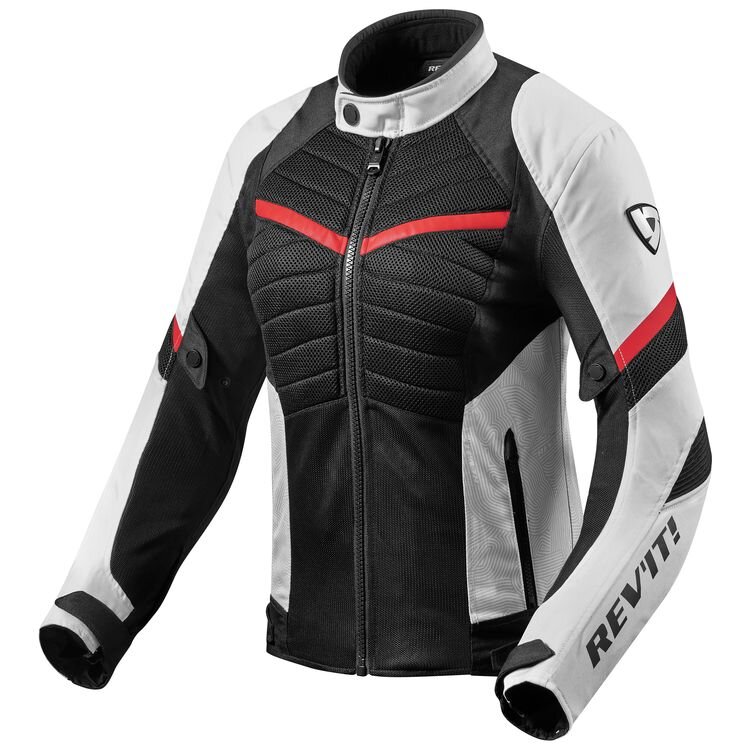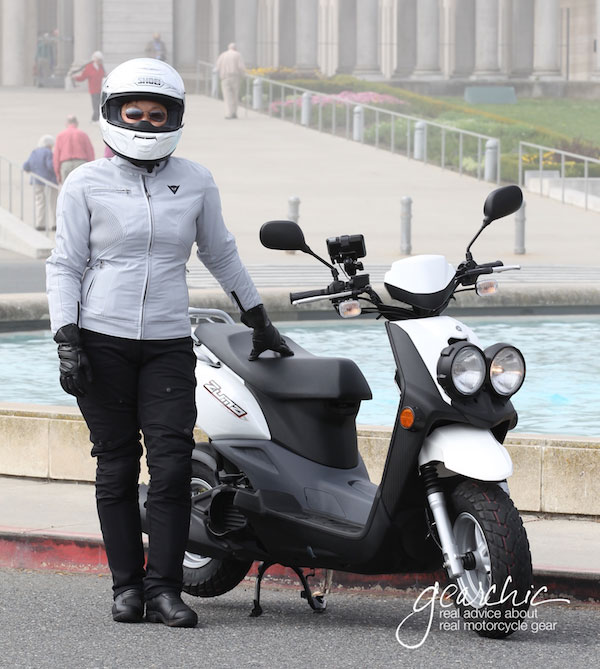So you've just bought a brand new motorcycle jacket. But you've never shopped for one before, or you've been wearing your friend's/brother's/boyfriend's/girlfriend's/neighbor's jacket and have no idea how something should fit. The fit can also vary greatly from jacket to jacket, depending on what kind of rider it was designed for.
I’m going to break this section out into several sections, and this is a work in progress so check back for updates:
Riding Style: How your riding style affects what you may choose including fit and feature differences
Protection: How to gauge what is right for you
Budget: How to choose how much to spend
RIDING STYLE
Jackets will come in different forms depending on the kind of riding that you're doing. For example:
A sport leather can be more comfortable for sportbike riding position.
A touring textile jacket is more comfortable in upright / dual sport / 2up riding position.
A relaxed fit leather jacket may be more comfortable in cruising / standard riding position.
PROTECTION
Also keep in mind that anyone can make and sell motorcycle gear. There are no guidelines or safety requirements in the US when it comes selling gear. So you can buy a "motorcycle" jacket at the mall but is it really for riding? Probably not.
There are so many things to consider, and with all the options available it can be overwhelming. First I'm going to show you what kind of features you'll find in motorcycle specific gear, and how to figure out what fits and what doesn't using some guidelines that you can apply to all of the gear you wear.
Here are a few questions I like to ask my customers when they're jacket shopping which might help you figure out what you want to search for:
What kind of riding are you doing? City, highway, backroads, etc.
What do you want your gear to do for you? Just look great? Or, keep you warm/dry/cool/etc.
What fit issues do we need to address and/or solve?
And don't forget to read my shopping rules before you get started :)
Features
These are features that I find to be important when it comes to protective motorcycle jackets:
Adjustable snaps/velcro/buttons at the collar and wrists to adjust fit, depending on how many layers you're wearing
Sealed zippers either with velcro, or a silicone/rubber seal to keep water out on winter jackets
Vents on the chest and/or back
Cinching at the waist to adjust fit
Exterior and interior access pockets
Big zipper pulls on any vents so you can open and close them while riding
Accordian/stretch panels above the elbows and over the shoulderblades to give more flexibility and room to reach forward
Removable liners for layering
Articulated (fit) for riding position
Pockets for CE/EN rated back protection, shoulder and elbow armor
Fit
Now to the fun part, checking your fit! Up until now, you've been standing in front of a mirror and not considering how it's going to feel and fit on your Motorcycle. It's time to put your motorcycle's feelings ahead of yours. It should matter more how the fit feels ON the bike, not off. So jump on a bike, or assume proper riding position to check sleeve length, etc.
Sit on a motorcycle and check the following:
For a jacket, check that your sleeves are long enough to wear under the gauntlet of your gloves.
Check your armor (elbow, shoulder, knee) and make sure that they’re sitting snugly against you, without the ability to move freely.
Ask someone nearby to see if they can move the armor while you’re in riding position. If they can move it around, then you need to cinch something or it’s simply too big.
How much extra room is there in the torso? If you’re trying one on that includes a removable thermal liner, make sure that the fit is as snug as possible, because you may not wear it, depending on the weather. You won’t need to ‘layer up’ if you’re buying a winter textile with a thermal liner.
Check to see if excess bunching appears at the chest and shoulder (in riding position). If it looks as if the shoulders are pushing up while in riding position, then it’s probably too big or if it's the wrong cut/style for your body type.
And ladies, if you have ladies... then you know how difficult it can be to get things to fit over them! Remember that motorcycle jackets (protective ones) are *always* going to fit best in riding position. So you might need to bend over a little and bring your shoulders forward, while bring your girls back. Then you're going to get on your motorcycle and go riding!
Olympia Airglide 4 Jacket
It's difficult to break the habit of mall shopping, because that's what you're used to. Always pick a size and fit that works BEST in Riding Position. Since that's where you're going to be spending the majority of your time, you will want the most comfortable fit in this position.
More often than not, people buy jackets that are 1-2 sizes too large in order to layer up when it’s cold. A properly fitting winter jacket should provide insulation by: 1) being the right size and 2) the thermal liner. If the thermal liner isn’t warm enough, substitute it for your favorite layer. But don’t buy it one size up so you can wear even more layers underneath. What’s going to happen when you decide to wear that jacket when it’s nice out? All of a sudden, without any layers, it’s 1-2 sizes too big. Or, if you want to be as warm as possible, try a heated liner. You can never go wrong with heated!
So try it on with and without every layer and see how it fits in the various combinations. Think about how you’ll wear it the most and then choose your size.
OPTIONS
So what kinds of jackets are out there? What are all the options? Here are the most common styles of jackets that you'll find, but of course there are variations of each type. I'm giving you the broadest categories so you have a starting point to narrow things down as far as which direction you want to go. First are the various forms of textiles, and then various forms of leather.
multiseason; 3 season cold (fall, winter, spring)
At the heaviest option, the 'winter' jacket is the warmest with the least amount of ventilation and a heavier weight outer shell like this Rev'it Horizon 2.
It has a rock solid outer shell that's waterproof and windproof and a removable thermal liner. With only 3 vents in total, it's ideal in Fall/Winter/Spring riding conditions. Or very mild summer riding (think San Francisco since it only gets hot like 3 days a year). There are lots of options in this category. Remember that something that has NO mesh panels on the outside will always work best outside of Summer riding temperatures. If you want to stay warm, this is a great way to do it!
My good friend Alisa Clickenger aka MotoAdventureGal in her multiseason Rev'it Levante Jacket
MULTISEASON, 3 SEASON WARM (spring, summer, fall)
A multi layer textile jacket like the Levante above is ideal if you want just one outfit to do everything, in different temperatures/environments. Look for zippered vents for summer and removable thermal/waterproof liners for winter. Keep in mind that since the outer shell is meshed, it won't work well in 40s with windchill because wind is going to be hitting that inner liner. So you need the first option for extremely cold temperatures. Unless you run *really* hot.
The one that Alisa is wearing has 1 removable liners, which is waterproof and thermal. But you can also find jackets that have 2 removable layers to give you more versatility like the ever popular Airglide 5. Everything you need to stay warm and dry. The performance shell also provides good abrasion resistance and protection in case of an accident.
MIDWEIGHT TEXTILE
And there are options like the Dainese Alice Textile which work in the middle, as far as warmth or ventilation. The Alice is neither waterproof, nor vented. So it's what I call a midweight. Since there isn't any venting, it's too warm when it's ~85-90F especially with humidity. (Unless you are REALLY coldblooded). I found this to work well in San Francisco when I commuted around town in the Summer/Spring (it never gets above 80 in the summer). But found it too cold when the temperatures dipped below 50F.
TEXTILE - MESH
A mesh jacket is the best option in the hottest of hots. The hotter it is, the cooler you may want your jacket. Wearing mesh is the most comfortable option. Many of us do wear leather in the summer but always perforated so that you have some air coming in given how much wearing leather will be.
I would never recommend a solid leather jacket in the middle of summer. You need some sort of ventilation or perforation at the very least! Instead of mesh, I opt for this hybrid Rev'it myself.
LEATHER - SPORT/RACE
You love to carve the canyons, hit the twisties hard and are thinking about doing some track days.
This will offer the best protection, armor and fit if you love riding sportbikes like I do. The arms are very precurved, the collar is short for spring/summer riding (when you typically do track days) and the length is a little shorter, with a connection zipper for wearing matching track pants.
The sleeves are also tapered at the cuffs, so your gauntlets will fit over them. This particular jacket only has a removable vest but there are a few sporty leathers out there that have removable thermal liners like the Alpinestars Devon, Jaws and Dainese Veloster.
LEATHER - CASUAL
A more casual looking jacket like this Maven is perfect for wearing out to dinner or going to a party without standing out too much as 'the biker'.
It has pockets so you can add armor in the shoulders and elbows and a pocket for an optional back protector.
The thickness is usually thinner (0.5-1.1mm) for more casual comfort off the bike. Heavier weight leathers are usually 1.2-1.3mm in thickness.
The fit is also more relaxed and more comfortable in upright riding positions.
Whatever you choose, choose something that works for you and actually protects you. Anyone can sell you a jacket and say that it's for motorcycles. But that's very different from something that will protect you in case you are in an accident. Remember that it's usually everyone else we are trying to protect ourselves from rather than yourself.

